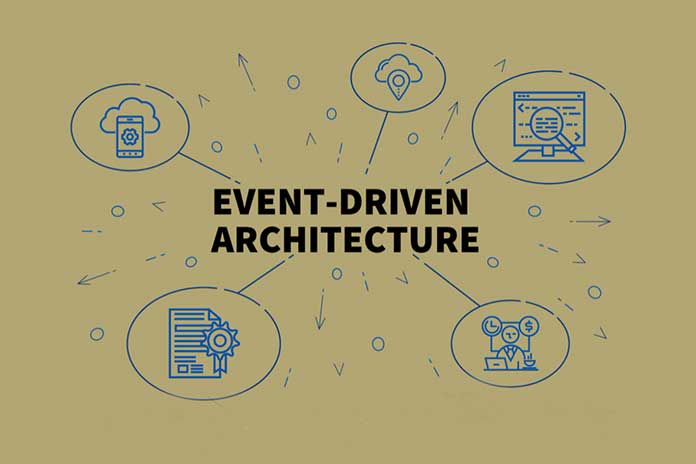Being able to deal with occurrences within an organizational structure is important, even more so in real-time to stand ahead of the crowd in this era of digital transformation. These state changes throughout an organization, be it with the customer base or supply chain, are viewed as events, and having the channels and architecture to deal with an event stream is more important than ever. Having this type of architecture has evolved in recent years to make analytics and insights more available.
The Origins of EDA
With more events and the need for more connection than ever before, event driven architecture (EDA) is a key structure to most organizations. This software design pattern enables businesses to spot important business moments from transactions to site visits for companies to act on in real-time, breaking away from the “request/response” architecture of the past where businesses were forced to wait for replies. The shift to EDA means moving from that data-centric model to an event-centric model. In the event-driven model, data is still very important, but the events and state changes are the most important component.
This breaks away from service models, but the highest priority was to make sure data wasn’t lost. Event architecture makes responding in real-time the most important facet. These mechanisms often use a log analogy to keep track of events. The difference between data-centric and event-centric architectures is often that they compare them between an information repository and a nervous system carrying messages throughout an enterprise. Now, event producers are able to generate and send event notifications, simply through the identification of trends and triggers through the framework.
Understanding Events
An event is described best as a state change within a business system. Think of events in the sense of being an airport. One person is checking in for a flight, another is boarding, another is buying a magazine at a newsstand. All of these are events, all affecting different industries. These types of events can be spotted easily through a properly implemented EDA framework. In some cases, an event message will be forwarded to a business or a customer to alert them to the occurrence. For example, a customer may receive an alert from their credit card company after purchasing tickets for a flight.
An architecture pattern allows for these event messages to be sent out accordingly, without delaying the next query or slowing down the message queue. If a person tries to reset their password for an online account, they’ll receive an email with a link to change that password. However, other customers could make the same request at the same time, but this event type can be handled in real-time without having to wait on one person to change that password. An event notification is sent out, and the applications built around an EDA enable more agile, scalable, and responsive digital business applications.
EDA Today
The components of an architectural pattern today include three parts: producer, consumer, and a broker. The broker can be optional if you’re operating with just a single producer and a single consumer in direct communication. Most commonly in enterprises, there are multiple data sources sending out all types of events with one or more consumers interested in some or all of the events that have taken place.
Retailers may use EDA to collect all of the purchases occurring at locations throughout the United States. Those sales are fed into architecture to monitor for fraud, sending these event notifications to a credit card processor, or whatever actions need to happen next. Dealing with these issues in real-time limits hurdles for customers who do end up having to replace cards because of fraud. As architecture evolves, it’s more important than ever for organizations to be able to tackle events and specific tasks with speed, transparency, and agility.


